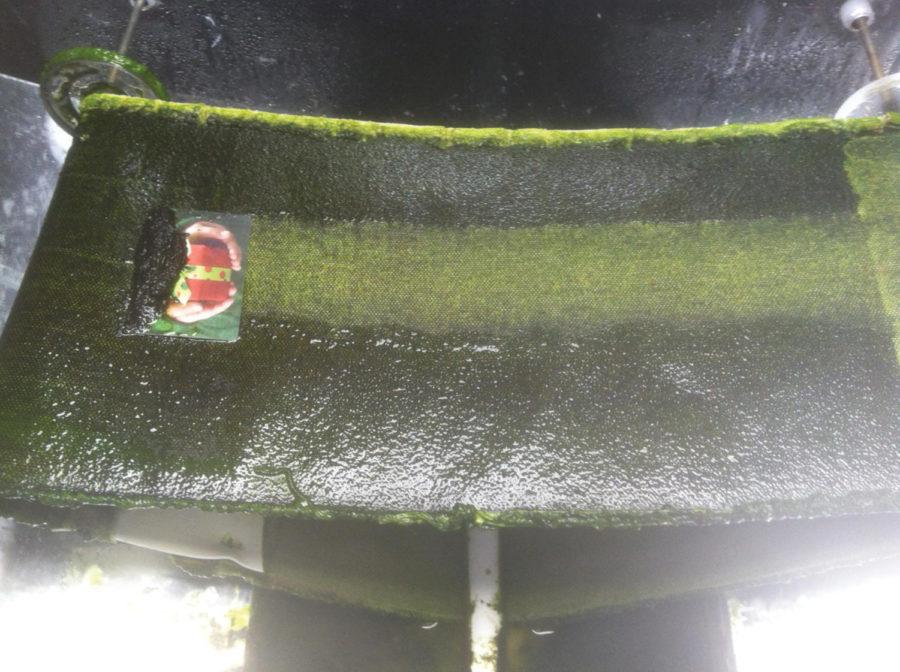Big expectations for a tiny algae
October 31, 2012
A tiny photosynthetic single-celled aquatic organism most commonly found coloring ponds and lakes green, plays a big role in ISU research. Used as a feedstock for biofuel and chemical production in the Bioeconomy Institute, and an ingredient in nutritious livestock feeds produced by the department of animal science, algae has seemingly endless applications.
Unfortunately, this green guy’s growth and potential is slightly hindered by a key factor — money. Cultivating and distributing algae biomass in large quantities for research is expensive. However, one researcher has come up with a novel approach which could solve this dilemma.
Martin Gross, graduate research assistant in food sciences and human nutrition, developed the revolving biofilm photobioreactor. Consisting of a revolving triangle structure, Gross said this reactor enables algae to attach and grow onto a surface while rotating that surface in and out of the liquid culture to stimulate algae growth.
Gross said the idea for the new algae cultivation system stems from a document released by the U.S. Department of Energy. The Department of Energy mapped out areas of research necessary for promoting economic algae production in the world; one of which focused on decreasing the harvesting costs.
Traditional algae culture systems use open ponds or photobioreactors, said Zhiyou Wen, associate professor of food science and human nutrition. Either way, the algae is suspended completely in a liquid which means the technology and harvesting costs for those particular cultivation methods will quickly add up.
”There is a huge amount of liquid you have to separate from these tiny [algae] cells,” Gross said.
This challenge led Gross and Wen the following question, how to extract the algae from the liquid in a cost-effective manner?
“In some of our [photobioreactors], I noticed there was a biofilm where the algae would attach to a surface,” Gross said. “The algae was really concentrated in that area, so I thought maybe we could take advantage of algae’s natural tendency to form a biofilm.”
Now introduce Gross’s revolving biofilm photobioreactor to the picture. The basic principle of RABP is the attached system, Wen said. Instead of letting the algae cells grow while floating around in the liquid, researchers fix the biofilm onto a surface such as mats, which only requires a simple scraping off to harvest. In this case, a biofilm is a concentration of algae cells.
Previously, the RABP was only available in lab-scale formats that limited algae production. Gross said researchers often conduct small scale experiments that work great in small scale environments. However, an opportunity to test the machine in a commercial setting presents itself in the form of Iowa State’s first pilot-scale algae production facility located on ISU-based BioCentury Research Farm.
The greenhouse facility provides an enclosure for the algae cultivation systems which allows for year-round mass production of algae biomass.
The size of the facility supports 50 to 100 kilograms of dry-ground algae a year. Wen said this amount is impossible in a small scale or lab scale setting.
“We think this greenhouse algae production facility will have great value in the respect that it will allow for mass production of algae biomass for researchers,” Wen said. That’s not it’s only purpose. “We also want to use the greenhouse system as a testbed to test different, new culture ideas like Martin’s [RABP].”







